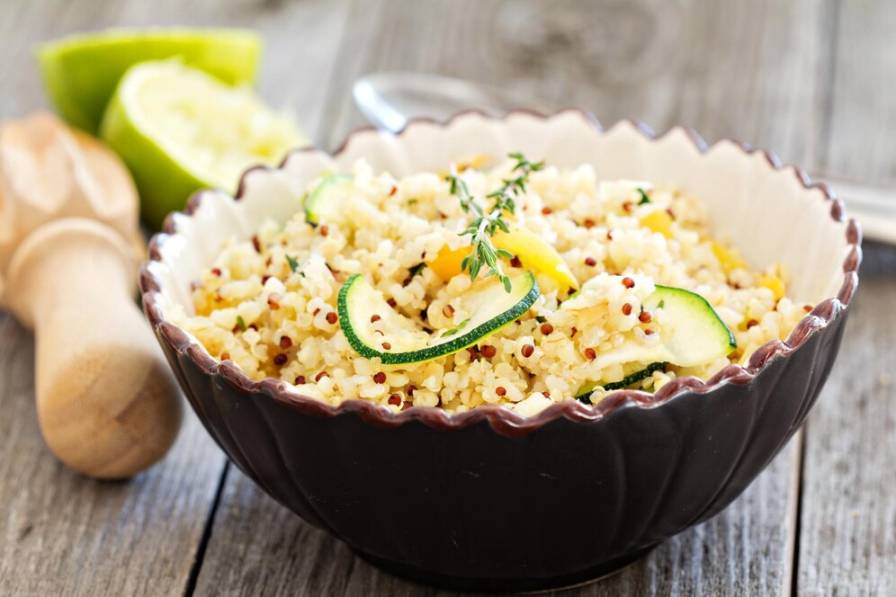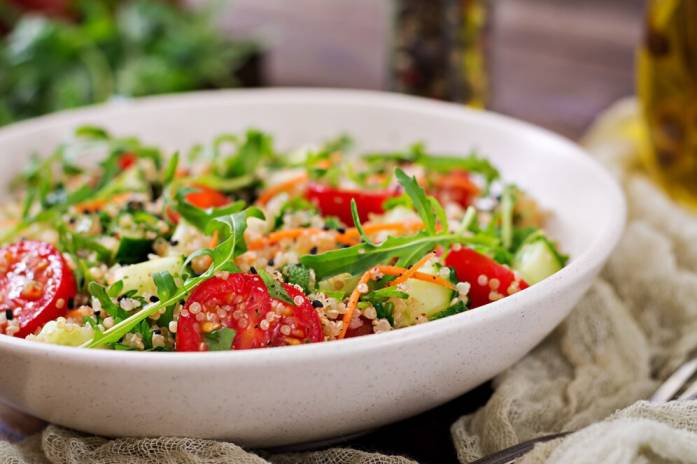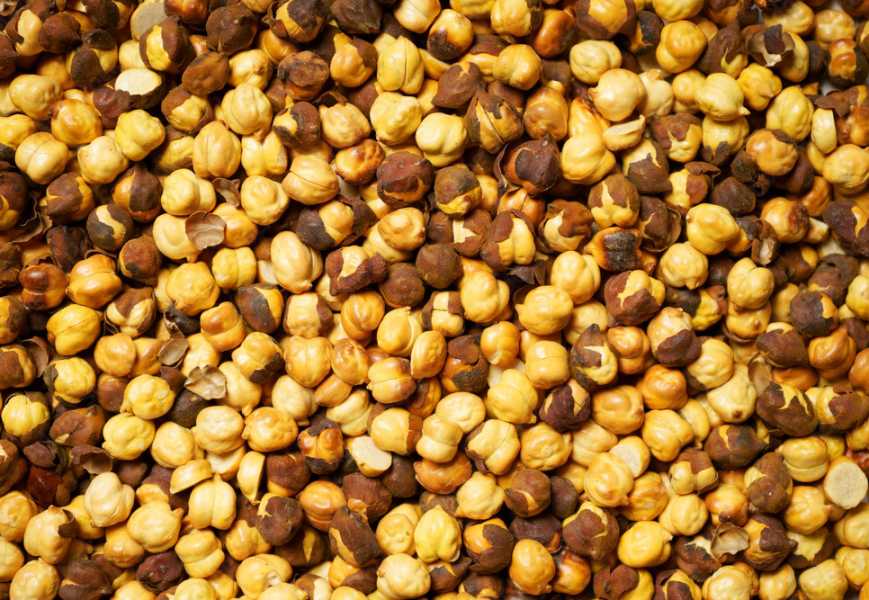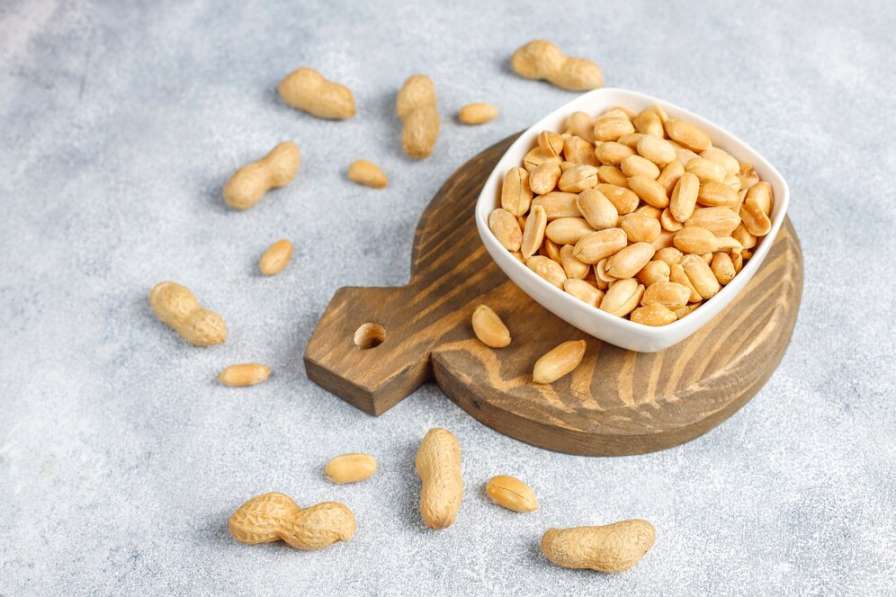Nutritional benefits of quinoa
Nutritional benefits of quinoa: In recent years, quinoa has become more well-known as more people look for healthy whole grains to eat. Quinoa is often called the best “super grain” because it is full of fibre, antioxidants, and many other healthy nutrients.

Not only is it easy to make, but its fluffy texture makes it perfect for any meal. Keep reading to find out what health benefits you can get from eating quinoa.
Nutritional benefits of quinoa
Quinoa’s crop hardiness and nutritional value have resulted in significant increases in global production and consumption in recent years. A 2022 study published in the journal Nutrients highlights the prevalence of omega-3 fatty acids, amino acids, and protein in quinoa. Experts even suggest that quinoa could solve the world’s malnutrition crisis.
According to the USDA, a 1-cup serving of cooked quinoa provides the body with the following nutrients:
- Calories: 222.
- Total Carbohydrates: 39 grammes
- Dietary Fibre: 5 grammes
- Total sugars: 2 grammes
- Protein: 8 grammes.
- Total fat: 4 grammes.
- Saturated fat: < 1 g.
- Sodium: 13 mg.
Quinoa is a healthy choice for people who want to get protein from plants. It also contains dietary fibre, which may help with digestion. Similarly, the fibre and protein content can help you feel more full than other grains. Quinoa provides a good source of manganese, folate, zinc, iron, phosphorus, magnesium, and vitamin B1.
Benefits of eating quinoa

There’s no denying that quinoa is good for you, which will make you want to eat more of it. Adding quinoa to your diet can help your health in the following ways because it is full of nutrition:
1. Anti-cancer properties
- A study published in 2021 in Food Frontiers suggests that the bioactive compounds in quinoa, such as phenolic compounds, polysaccharides, and saponins, may help reduce inflammation and protect cells from damage.
- Polysaccharides have been studied, and they seem to have health benefits for cells and may help prevent some types of cancer, like liver and cervical cancer. But more research needs to be done on people to be sure of this.
Also read: Benefits of poha
2. Decrease Inflammation
- In quinoa, there are more antioxidants than just polysaccharides and saponins. Flavonoids and polyphenols are also found in this grain.
- A 2019 study in Food Science & Nutrition found that these compounds may help protect your cells from oxidative damage and reduce inflammation because they are antioxidants.
3. Keep Blood Sugar in stable
- In a small study published in Nutrients in 2022, people over 65 with blood sugar levels between 100 and 125 mg/dL ate quinoa for four weeks.
- The results showed a big drop in glucose levels and a small amount of weight loss. Researchers think that eating quinoa instead of other complex carbs might help keep you from getting type 2 diabetes.
- Quinoa has a low glycemic index because it has protein and fibre. There are also phenolic compounds, which slow the breakdown of carbohydrates to avoid a big glucose spike after a meal.
4. Help with the digestive process
- As was already said, quinoa is full of fibre, which is an important nutrient for good digestion.
- Additionally, eating quinoa may help good bacteria grow in the gut microbiome because fibre feeds these good bacteria.
5. Decreased Cholesterol
- Eating more quinoa can help people who are more likely to have a heart attack, stroke, or heart disease control their cholesterol levels.
- Quinoa may help lower LDL cholesterol levels because it has a lot of fibre. Also, the high amount of omega-3 fatty acids in quinoa may have a big positive effect.
Also read: Puffed millet benefits
6. Good for People with Celiac Disease
- More people are now aware of celiac disease and gluten intolerance. If you have to stick to a strict gluten-free diet, quinoa is a good grain to eat instead of grains that contain gluten.
- A study published in the 2020 Proceedings says that quinoa seeds are a gluten-free protein with a lot of amino acids.
- Soaking and germinating the quinoa seeds, which is called malting, makes it easier for the body to absorb nutrients.
- When you eat malt, the amino acids, simple sugars, and fatty acids that are released make it easier for the food to move through your intestines.
7. Help with anaemia
- People who don’t eat enough iron-rich foods, lose a lot of blood on a regular basis, or do a lot of hard exercise may not get enough iron.
- A person with iron-deficiency anaemia may feel tired, pale, dizzy, have weak nails, and be dizzy, among other things.
- In a vegan or vegetarian diet, quinoa might make up for this missing nutrient. Research says that 25% of people around the world have anaemia, and that 50% of those cases are caused by not getting enough iron.
- Foods that are high in iron, like quinoa, leafy greens, and red meat, help the body store this important mineral.
8. Good source of proteins
- Quinoa is a good source of protein, containing 8 grammes per cooked cup (185 grammes).
- Quinoa is commonly known as a complete protein. This is because it contains all nine of the essential amino acids, which your body cannot produce on its own.
- Quinoa is a good source of protein, so incorporating it into your diet can help you meet your daily protein requirements.
- This is especially true for people who eat plant-based diets, such as vegans. Combining quinoa with beans, tofu, and mixed vegetables creates a quick plant-based, protein-rich meal.
9. High in essential vitamins and minerals.
- Many people do not get enough of certain essential nutrients. For example, studies show that many children and adults do not get enough vitamins and minerals, such as folate, potassium, iron, and magnesium.
- Furthermore, studies indicate that 95% of adults and children do not consume the recommended amount of fibre. Inadequate fibre intake can have a variety of negative consequences for your health.
- Quinoa contains a lot of fibre as well as vitamins and minerals that many people don’t get enough of.
- Eating quinoa on a regular basis can help you meet your magnesium, potassium, iron, fibre, and folate requirements, which are especially important during pregnancy due to its role in growth and development.
Benefits of quinoa during pregnancy
- Nutritionists agree that eating a small amount of quinoa while pregnant is safe. You can eat quinoa as a vegetarian food because it has all the essential amino acids, protein, minerals, and fibre. There is a lot of oxalate in it, though. Oxalate changes how iron and calcium are absorbed in the body. Pregnant women need to get enough iron and calcium.
- On top of that, the outside of quinoa is covered with saponin, a poisonous chemical that helps the plant naturally protect itself. Saponin blocks the absorption of minerals and vitamins and is poisonous, which can happen to people who eat too much. But it’s only coated on the outside. So, you can get rid of it by giving quinoa a good rinse before cooking.
- So, quinoa is safe to eat while pregnant as long as it is eaten in moderation and is well rinsed before cooking. A couple of servings a week is what experts say.
Benefits of quinoa over rice
- It’s better for your health because quinoa doesn’t quickly raise your blood sugar like white rice does.
- Quinoa has a similar fluffy texture to rice and is high in both fibre and protein. It also has a lot more other nutrients than rice.
- Quinoa has about 5 grammes more fibre and twice as much protein as white rice in a cup.
- There are fewer calories and carbs in quinoa than in white rice.
- In contrast to rice, the fibres in quinoa help lower cholesterol and keep blood sugar levels in check.
- Triglycerides are a type of fat that rises in your blood after a meal. Quinoa, on the other hand, lowers them.
- Quinoa has more of all the essential amino acids than other foods. Quinoa has interesting healing properties because it has more lysine and tryptophan, which are amino acids.
- Quinoa has three times as much calcium, five times as much iron, eight times as much potassium, magnesium, phosphorus, zinc (which rice doesn’t have), and two times as much manganese as rice.
Conclusion
Quinoa is a great source of whole grains, and it has a lot of fibre, which can help with digestion, keep blood sugar stable, and lower cholesterol, among other things. Also, people who have celiac disease can eat this grain without any problems. You can get the health benefits of quinoa whether you eat it as a side dish or use it in other recipes. It’s a great choice for any meal, of course, because it cooks quickly.
Frequently Asked Questions (FAQs)
Q1. Is quinoa better than rice?
Both quinoa and rice are excellent sources of complex carbohydrates. However, quinoa has a higher protein content than rice, which provides additional benefits such as slowing digestion and keeping you satisfied.
Q2. Is quinoa effective for weight loss?
Quinoa’s high fibre and protein content keep you satisfied for longer. Those trying to lose weight may find quinoa to be an important food source for healthy weight loss and management.
Q3. Is it okay to eat quinoa every day?
While the specific recommendations vary depending on gender, age, and medical condition, among other things, the USDA recommends eating whole grains on a daily basis. Luckily, quinoa falls under this category of daily dietary recommendations.
Q4. Can you eat quinoa if you’re diabetic?
Quinoa contains fibre, which can help control blood glucose levels. People with diabetes may benefit from eating quinoa on a regular basis.
Q5. Are there any disadvantages to quinoa?
Like any other food, quinoa should only be eaten in moderation. For example, overeating fibre can result in an upset stomach.


